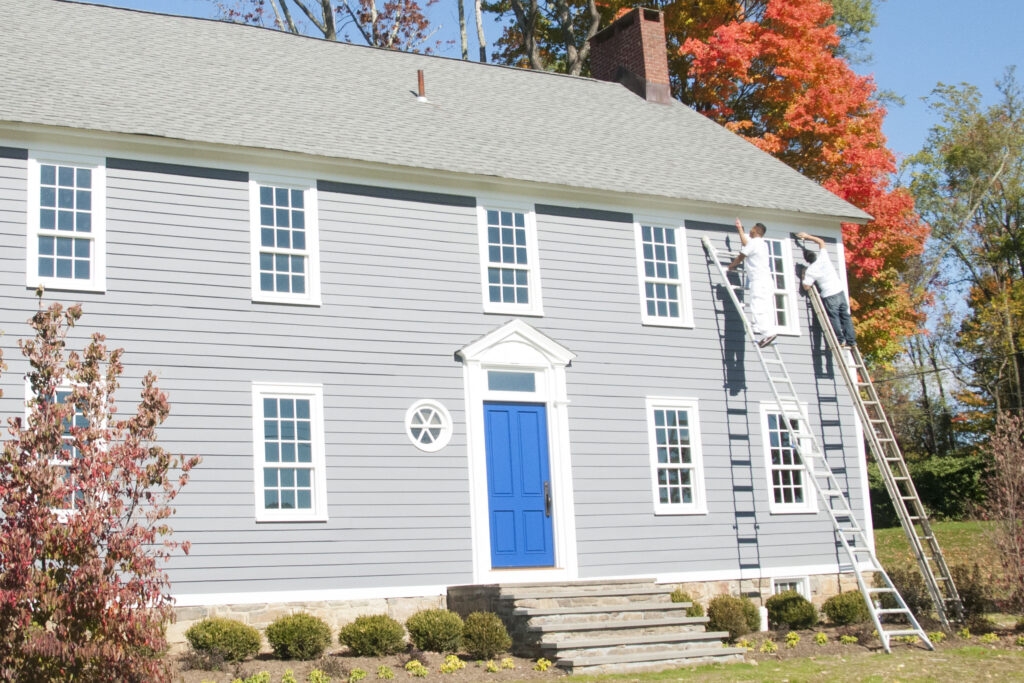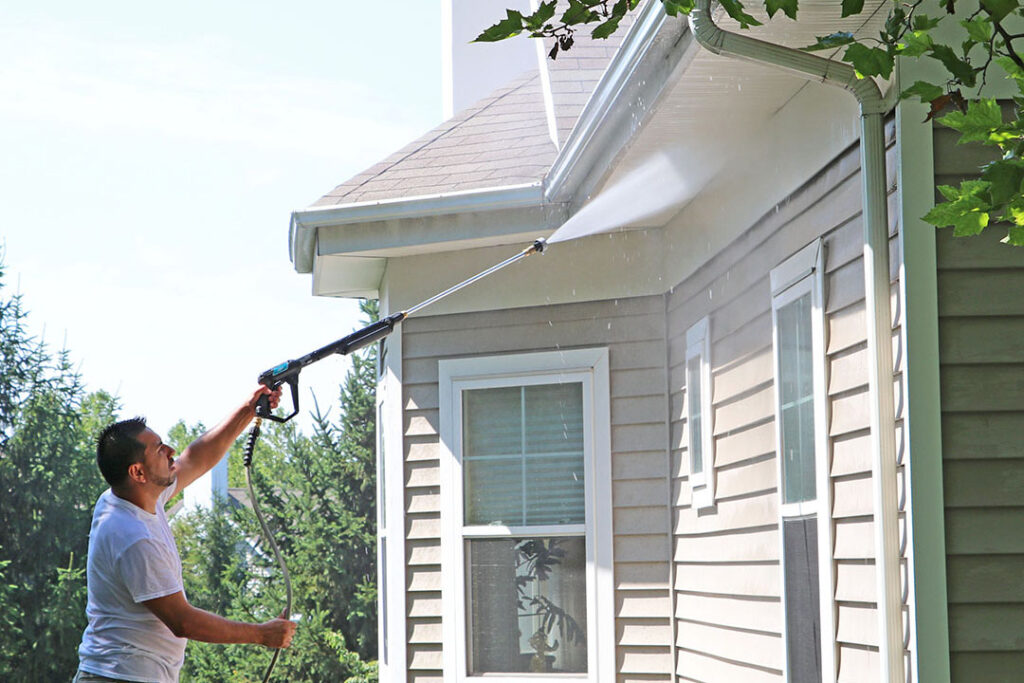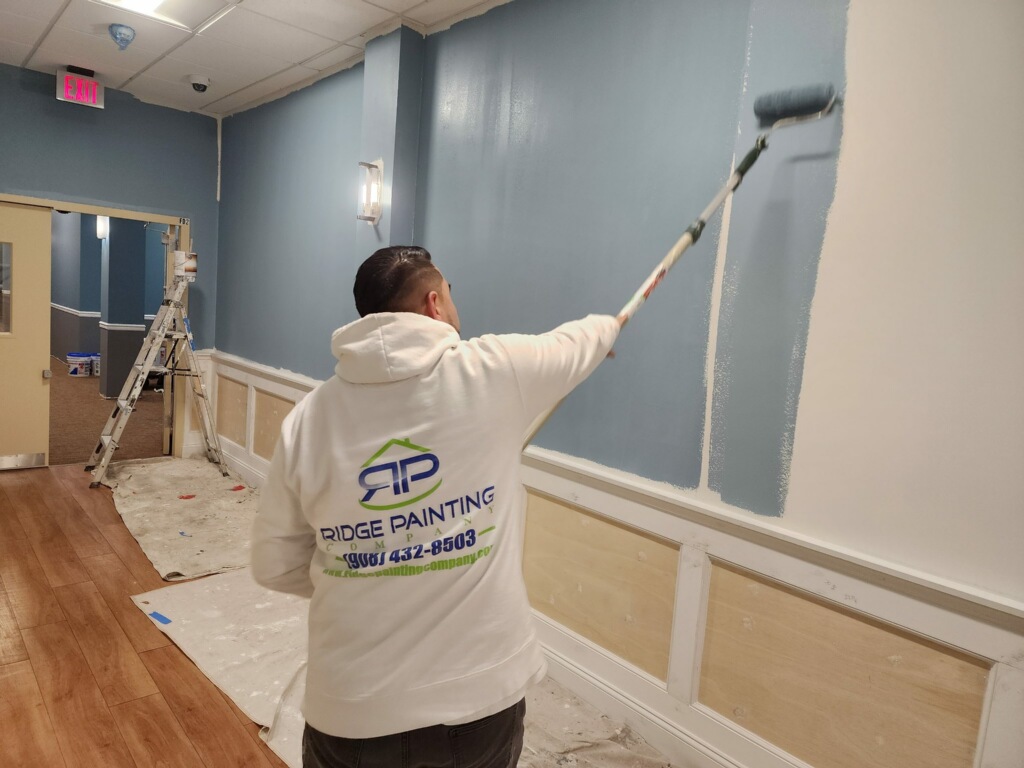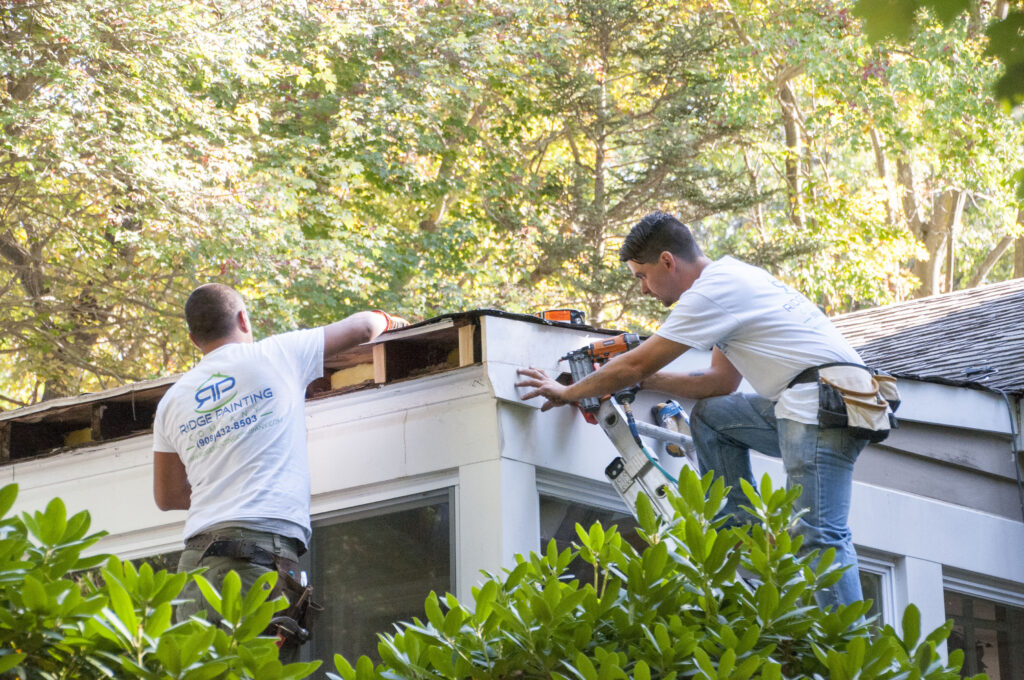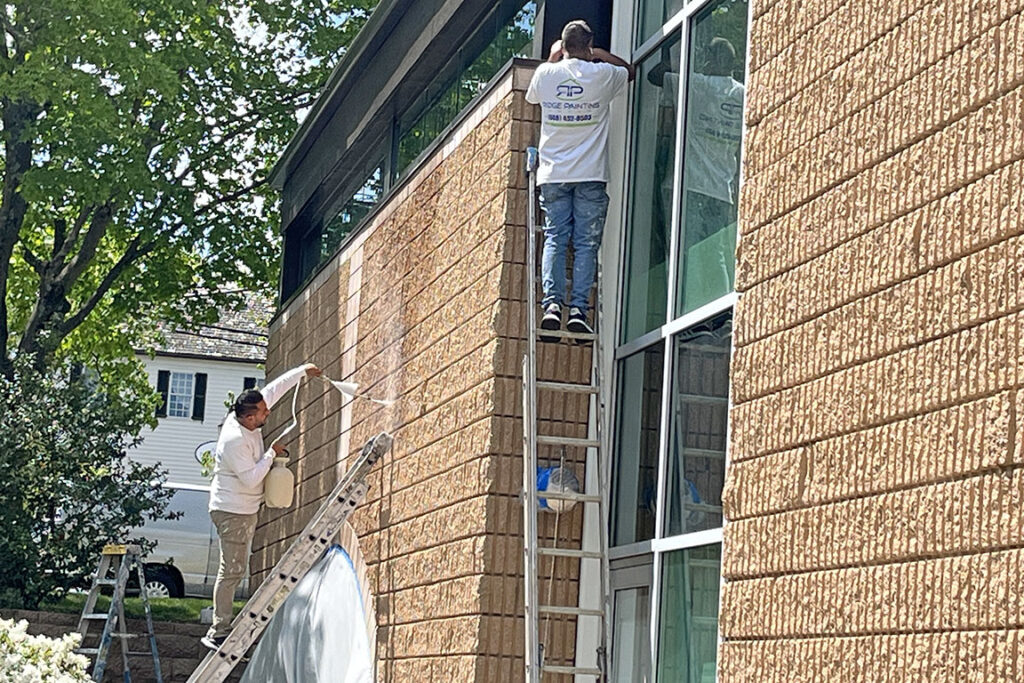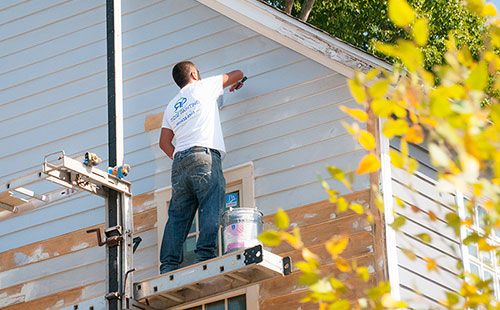
Most people know that a high-quality exterior paint job lasts for many years and instantly boosts the value and curb appeal of a property. However, did you know that exterior painting is also one of the best ways to protect your home against the elements? Outdoor siding must be able to withstand extreme weather, UV light rays, and the build-up of pollutants and contaminants. The layer of paint, barely thicker than a sheet of paper, acts as a protective coating for that surface.
At Ridge Painting Company, we understand that maintaining your home is important to you. That’s why we do careful preparation work, use high-quality materials, and always apply two topcoats. This produces a stronger seal and ensures that your exterior paint job is beautiful, long-lasting, and resilient.
Just like all other commercial paintings, exterior painting has a multi-step process that is important to follow. The phrase “it’s all in the prep” is an accurate one, the level of preparation will determine the quality of the finished product. Every exterior job starts with a thorough powerwash to clean the surface of all dirt/mold. Next, the preparation starts. All flaking or peeling paint on the siding and trim is scraped and the areas are sanded smooth. Once sanded, we caulk all the trim and open seams. After the bare wood areas will be spot primed using an oil primer, if the amount of bare wood is excessive the entire house will be oil primed. Upon completion of priming, the siding and trim both get two full coats of quality exterior paint. After the final coats of paint have been applied, we clean the area surrounding the property of any debris left over. Below is a step-by-step timeline, take a look and give us a call if you are looking for the best exterior painters nj has to offer.
Exterior Painting Services
Engage.
- Step 1
- Exterior powerwashing
- Step 2
- Exterior scrape / sand
- Step 3
- Exterior patch
- Step 4
- Exterior caulk
- Step 5
- Exterior sanding
- Step 6
- Exterior priming
- Step 7
- Exterior final coat
Enjoy.
The Importance of Exterior Painting
Protection Against Weather
The primary function of exterior paint is to provide a protective barrier against the elements. Weather conditions such as rain, snow, and extreme sunlight can severely damage the structural integrity of your home. Quality exterior paint acts as a shield, preventing moisture penetration that can lead to wood rot and compromising the structural integrity of your home. Additionally, it protects against damage from UV rays, which can fade and degrade various building materials over time.
Preventing Wood Rot and Insect Damage
Wood rot is a common issue in homes, especially in areas exposed to high levels of moisture. By sealing cracks and gaps with caulking before painting, you effectively keep water and water vapors out of your house. This prevention is crucial because once wood begins to rot, it becomes an attractive nesting ground for pests like termites and carpenter ants, leading to further damage.
Energy Efficiency and Cost Savings
A well-maintained exterior paint job can contribute to energy efficiency in your home. Reflective paint technologies can deflect UV rays, reducing the need for air conditioning during hot months. Moreover, by sealing out moisture, quality exterior paint prevents the swelling and contracting of building materials, which can lead to air leaks and increased heating and cooling costs.
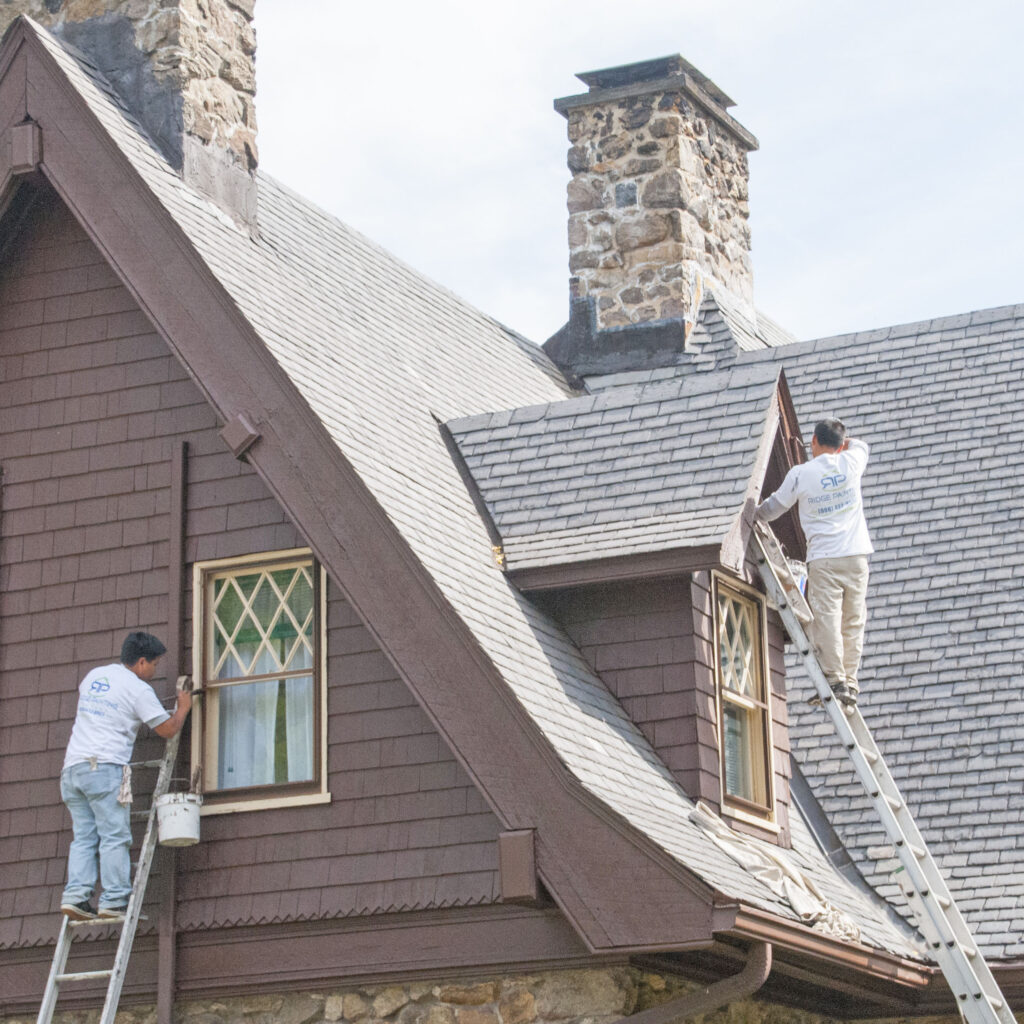
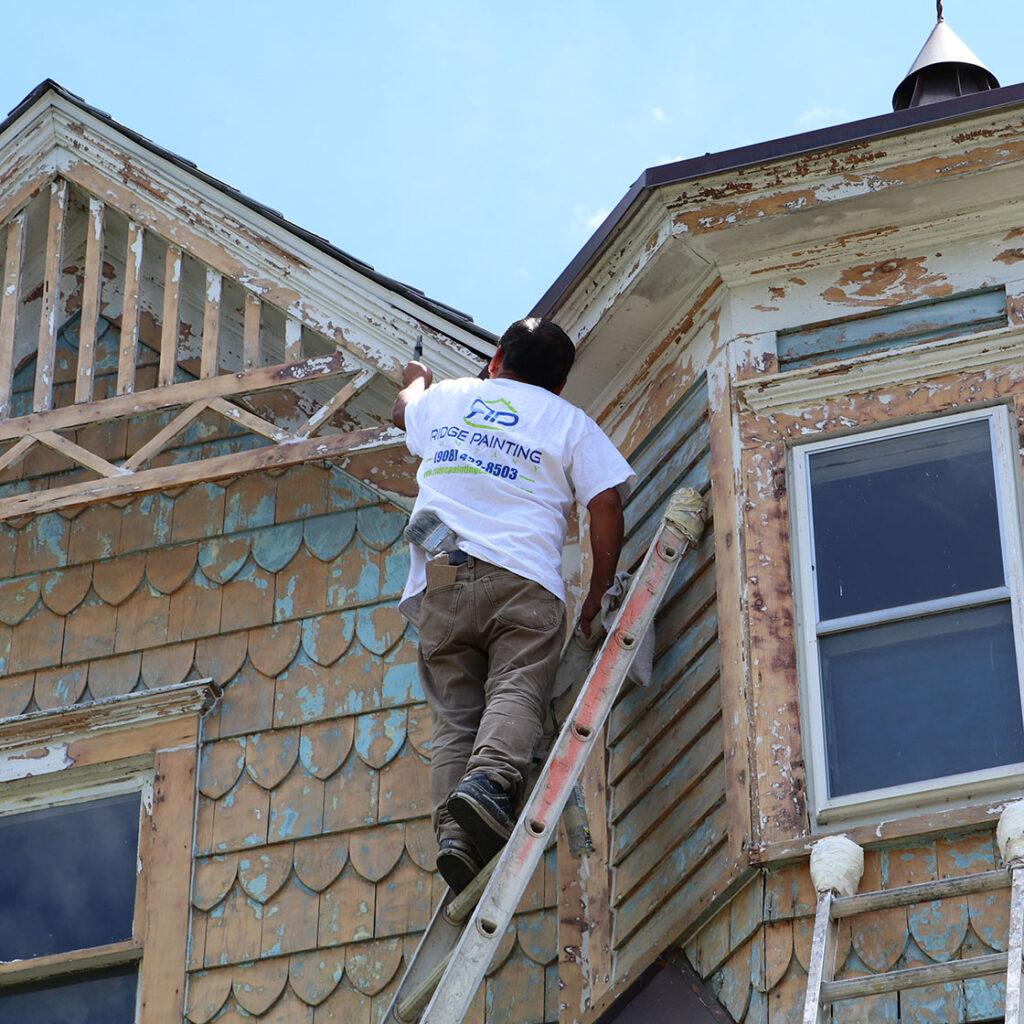
Aesthetic Appeal and Property Value
The enhancement of aesthetic appeal and property value through exterior painting is a compelling aspect of home maintenance that extends well beyond mere color updates. This process transforms the visual appeal of a home, imbuing it with freshness and vibrancy that can breathe new life into an aging facade. A meticulously chosen color palette not only reflects the homeowner’s personal style but also harmonizes with the surrounding environment, creating a standout presence in any neighborhood. This visual transformation is not only pleasing to the eye but also plays a critical role in shaping first impressions—a factor that becomes crucial when the property is listed for sale.
The influence of exterior painting on property value cannot be overstated. It is widely acknowledged within real estate and home improvement circles that a well-executed exterior paint job is among the most cost-effective renovations, offering substantial returns on investment (ROI). This is because the exterior of a home is the first thing prospective buyers see. A pristine, well-maintained appearance can significantly boost a property’s curb appeal, making it more attractive to buyers and potentially leading to quicker sales at higher prices. The psychological impact of a freshly painted home is profound; it signals to buyers that the property is well cared for, potentially reducing concerns about hidden maintenance issues and increasing the perceived value of the home.
Moreover, the strategic selection of colors can play a pivotal role in enhancing architectural features and minimizing less appealing aspects, further elevating the property’s aesthetic and market appeal. Neutral and timeless colors tend to attract a wider array of buyers, but even bold and distinctive color choices, when executed tastefully, can captivate a niche market that appreciates unique properties.
The Process of Exterior Painting
Preparation
The preparation phase of an exterior painting project is foundational, setting the stage for a finish that is not only visually appealing but also durable and protective. This meticulous process begins with the thorough cleaning of the home’s exterior. Power washing is a favored method for this task, as it effectively blasts away years of accumulated dirt, grime, and debris, as well as loose and peeling paint that can undermine the adhesion of the new coat. This step is vital for ensuring that the surface is clean, which is essential for the paint to bond properly and for achieving a smooth, even finish.
Following the cleaning, a detailed inspection of the home’s exterior is necessary to identify any areas of damage that need attention. This includes looking for signs of wood rot, cracks in stucco, or any other structural issues that could affect the integrity of the painting job. Repairing these damages is crucial; for instance, wood that has begun to rot must be replaced or treated, and cracks or holes in surfaces should be filled. Ignoring these issues can lead to further damage, as water and pests find their way into the home through these vulnerabilities.
Caulking plays a pivotal role in the preparation phase. By sealing gaps around windows, doors, and other junctions, caulking provides a watertight seal that prevents moisture penetration, a key factor in the prevention of wood rot and mold growth. Moreover, it helps in maintaining the home’s energy efficiency by eliminating drafts that can lead to higher heating and cooling costs. Selecting the right type of caulk is important, as it needs to be durable enough to withstand the elements and flexible enough to accommodate the natural expansion and contraction of building materials.
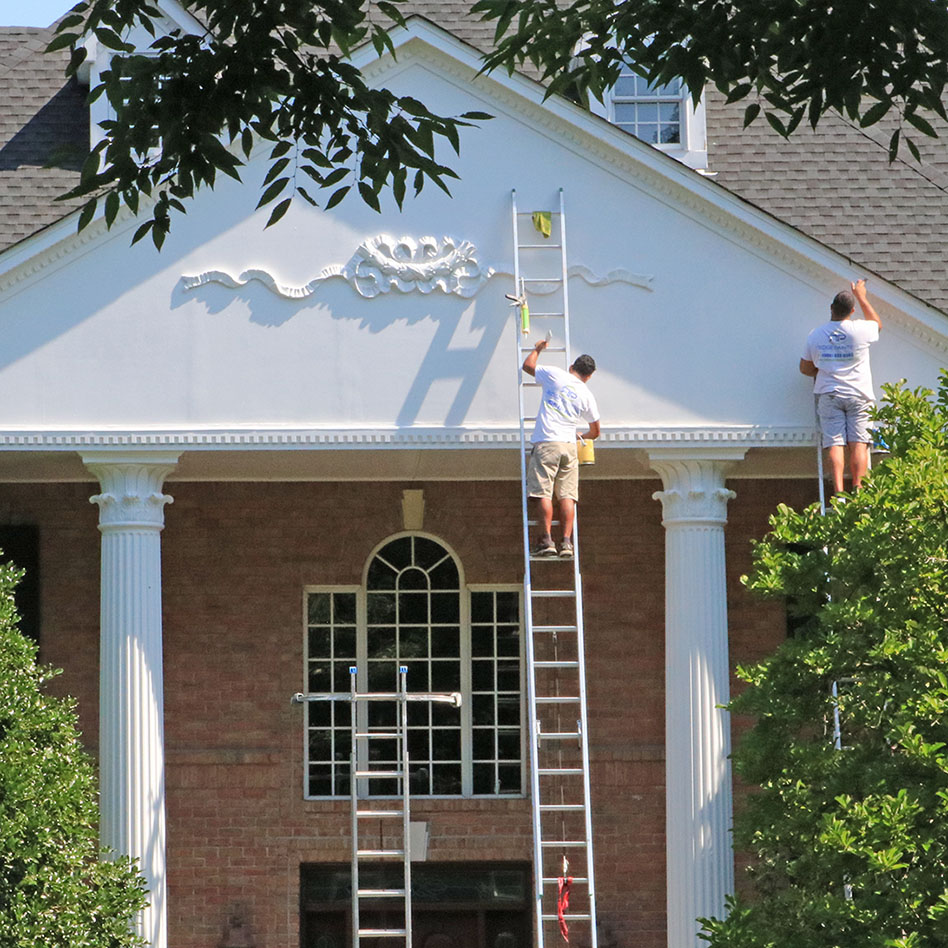
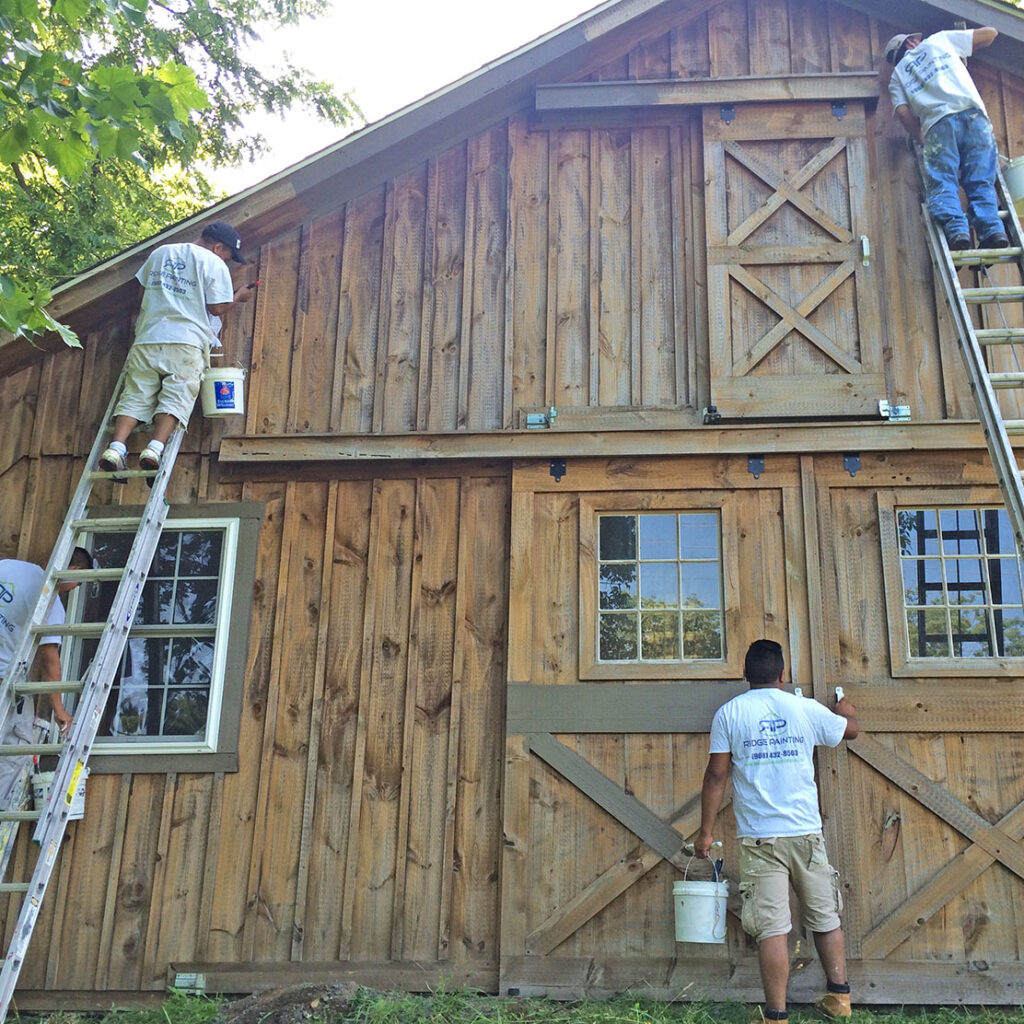
Prep Continued
Sanding is another essential step in the preparation process, especially for surfaces that are not perfectly smooth. It helps to remove any remaining old paint flakes, evens out repairs, and creates a textured surface that paint can adhere to more effectively. This step ensures that the new paint will have a uniform appearance and will stick to the surface for a longer period.
Finally, the application of a quality primer sets a cohesive foundation for the paint to adhere to, enhancing its durability and the vibrancy of the color. Primer is particularly important for surfaces that have been repaired or have exposed raw materials, as it ensures that the finished coat will look even and professional.
In sum, the preparation phase is a critical component of the exterior painting process. It requires a considerable investment of time and effort but is indispensable for achieving a paint job that not only looks great upon completion but also stands the test of time. Thorough cleaning, repairing, caulking, sanding, and priming are all steps that contribute to the longevity of the paint job and the overall protection of the home, underscoring the adage that a job well begun is half done.
Choosing the Right Paint
Selecting the right type of paint is a critical decision in any exterior painting project, impacting not only the appearance of your home but also its protection against the elements. The durability, finish, and overall performance of the paint are influenced by its formulation, which can be broadly categorized into oil-based (alkyd) and water-based (latex) varieties. Each has its own set of advantages and considerations, making the choice highly dependent on the specific requirements of your project, including the material of your home’s exterior, the environmental conditions it faces, and the desired longevity and maintenance level.
Understanding Oil-Based and Water-Based Paints
Oil-Based Paints are known for their durability and resistance to wear, making them a good choice for surfaces that endure a lot of abuse. They tend to adhere well to surfaces, offering a level of smoothness that is hard to achieve with latex paints. Oil-based paints are particularly effective in high-contact areas or where a glossy finish is desired. However, they have longer drying times, emit strong odors, and require solvents like mineral spirits for cleanup, which can be a downside for many homeowners. Additionally, environmental regulations in some areas restrict the use of oil-based paints due to their volatile organic compound (VOC) content.
Water-Based Paints (Latex), on the other hand, have gained popularity due to their ease of use, quick drying times, and lower VOC emissions. They are less prone to cracking and yellowing over time compared to oil-based paints, making them an excellent choice for exterior walls that are exposed to varying weather conditions. Latex paints also offer excellent color retention and are more resistant to fading from sunlight. They clean up with soap and water, making them a more environmentally friendly option.
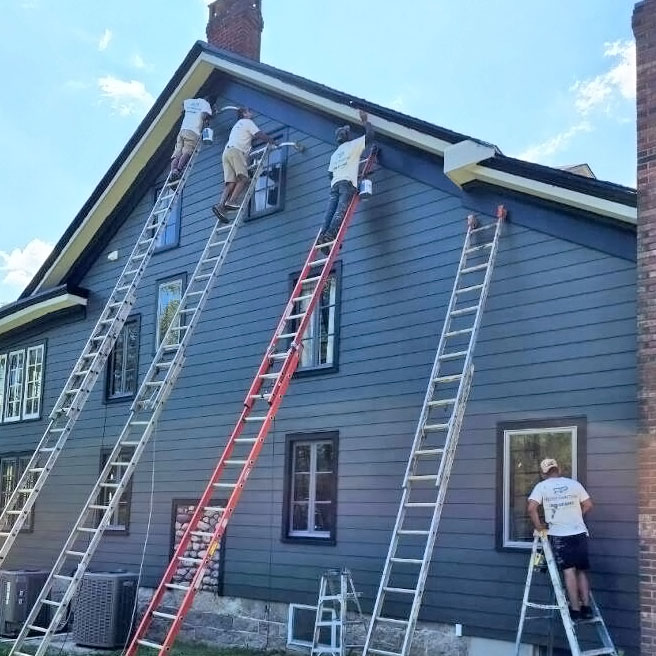
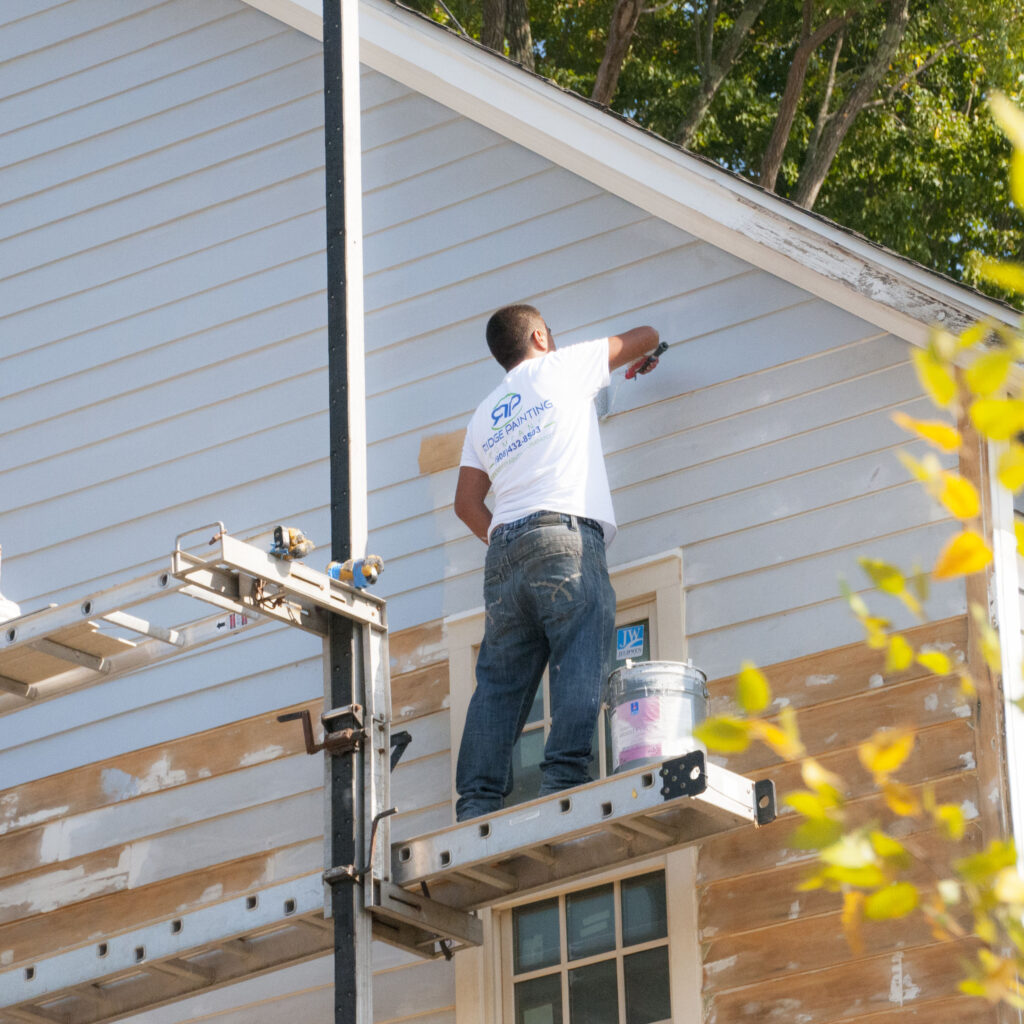
Factors Influencing Paint Selection
Material of Home’s Exterior: The type of surface you are painting plays a significant role in paint selection. Water-based paints are generally preferred for siding made of wood or fiber cement because they allow the material to breathe, reducing the risk of moisture buildup that can lead to rot. Oil-based paints, meanwhile, are often chosen for their superior adhesion on surfaces like metal railings and doors.
Climatic Conditions: The weather conditions in your area can also dictate the choice of paint. In regions with extreme temperatures, fluctuating conditions, or high humidity, water-based paints are favored for their flexibility and ability to withstand such environments without cracking or peeling. Oil-based paints might be selected for their toughness in areas with harsh winters or for surfaces that require extra protection against moisture penetration.
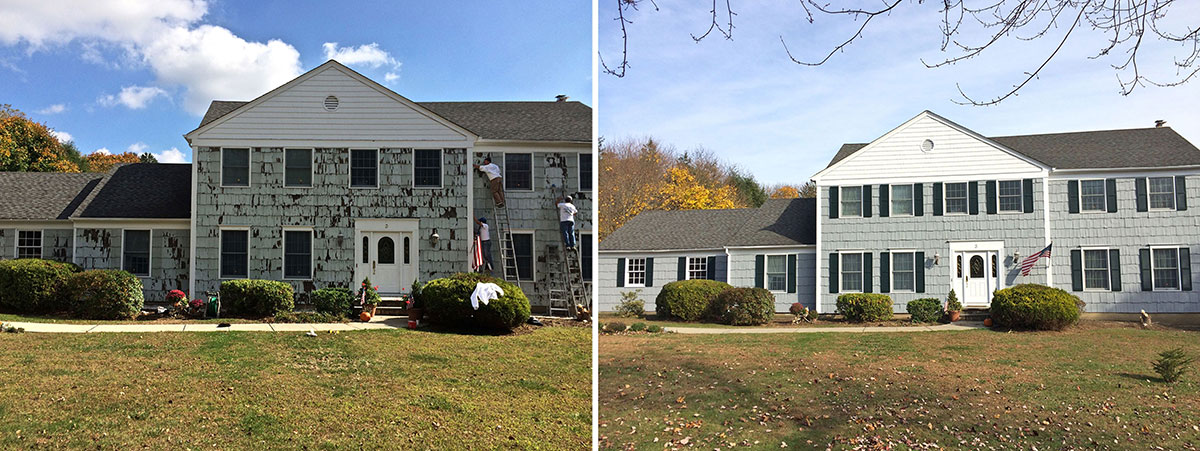
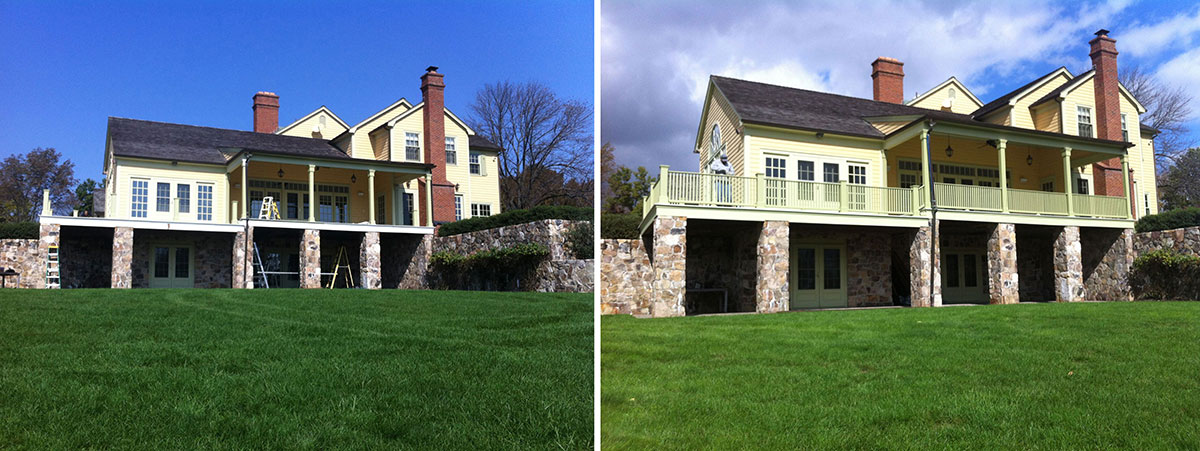
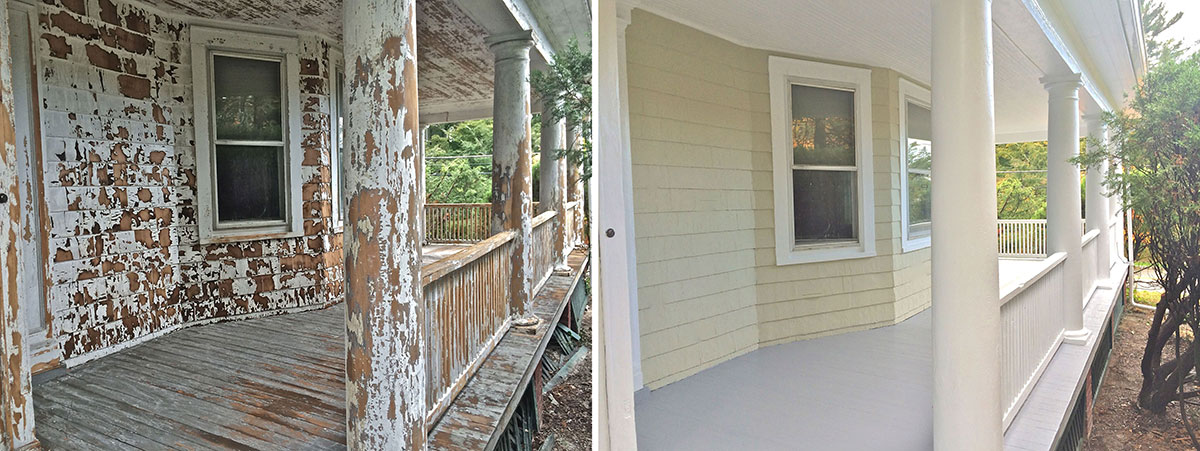
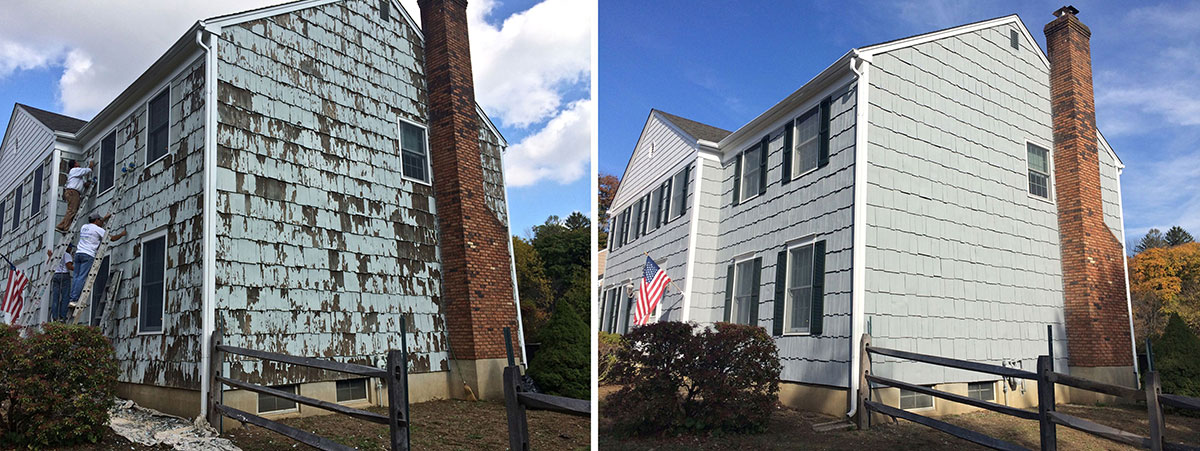
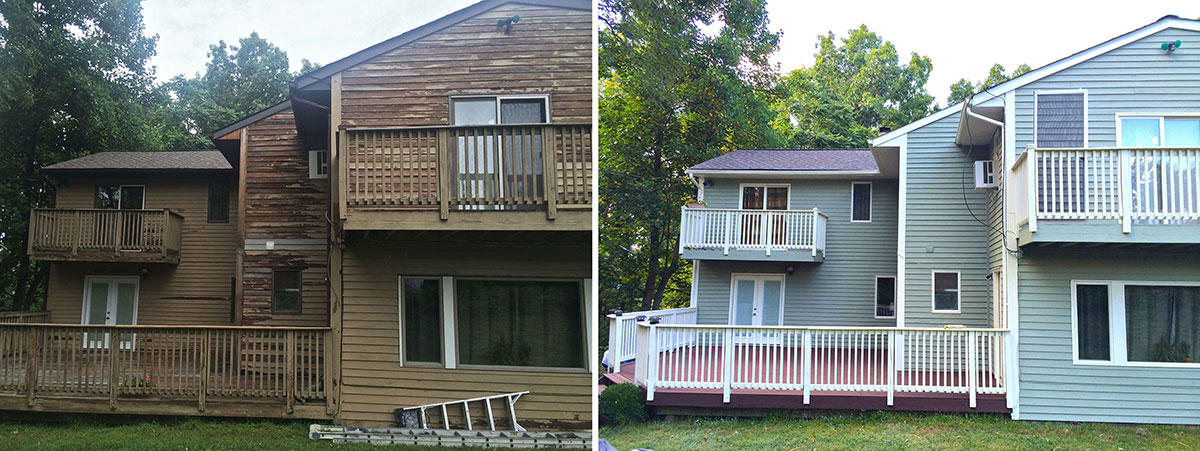
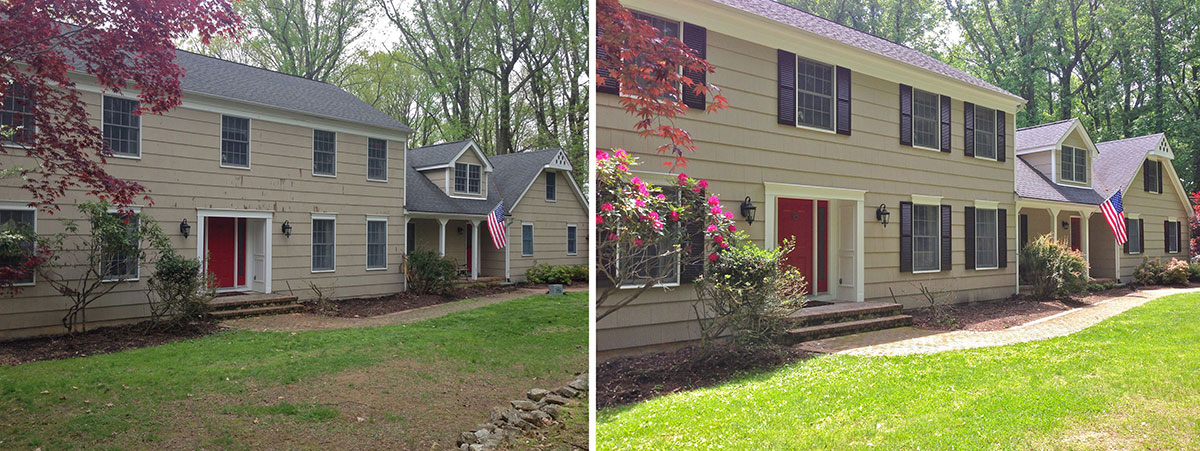
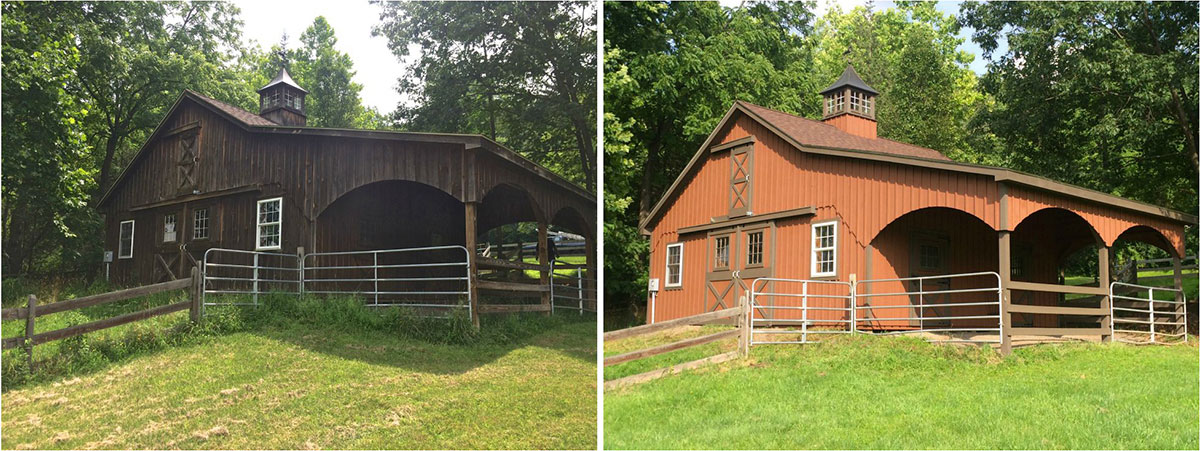
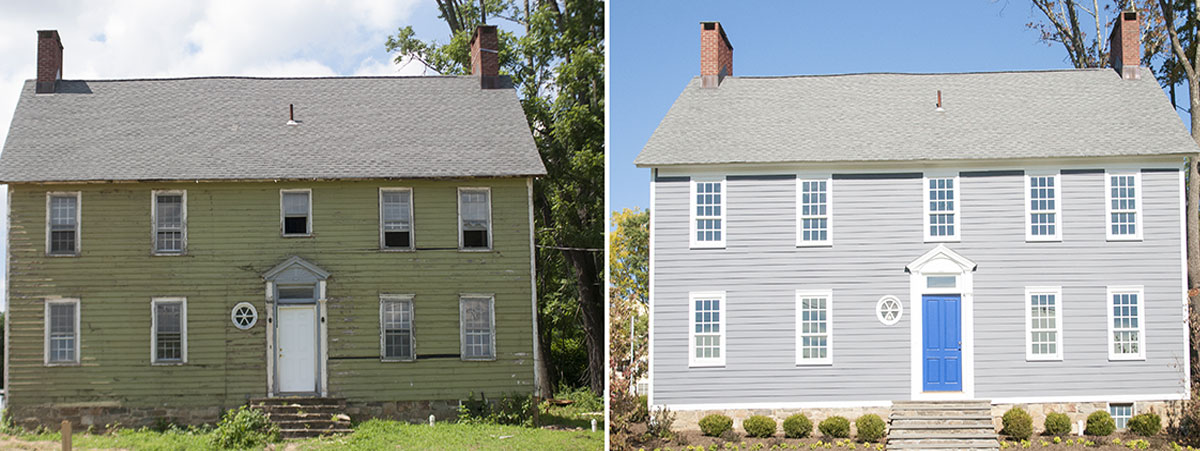
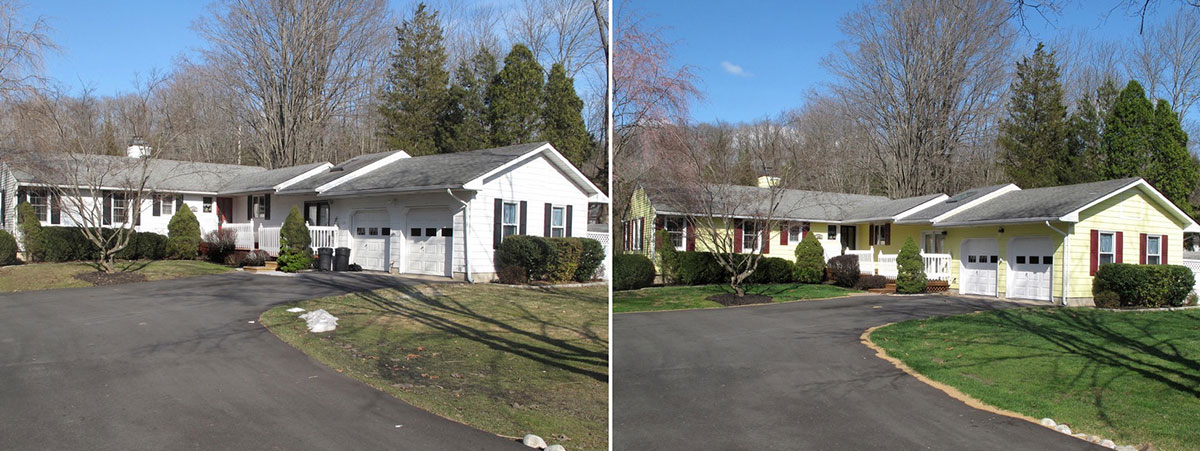
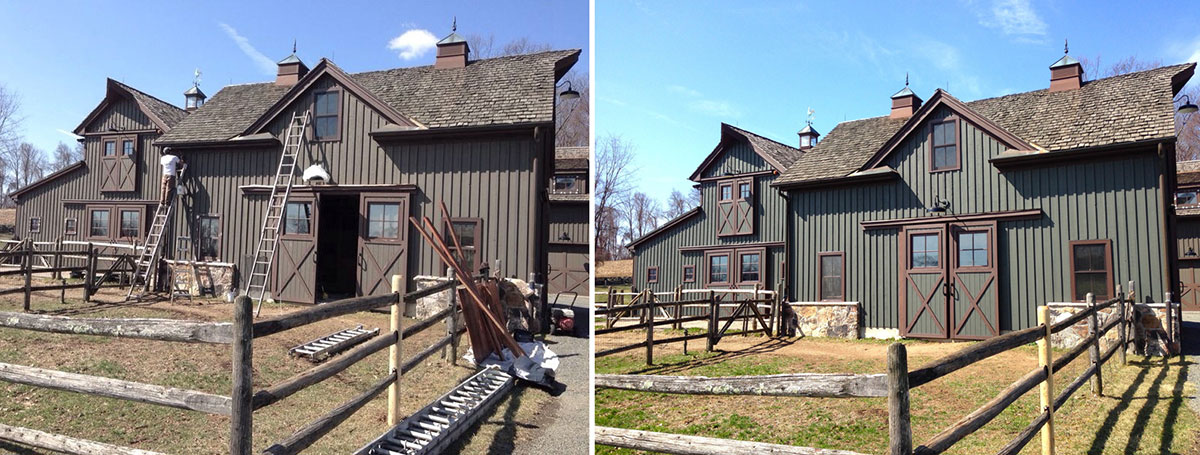
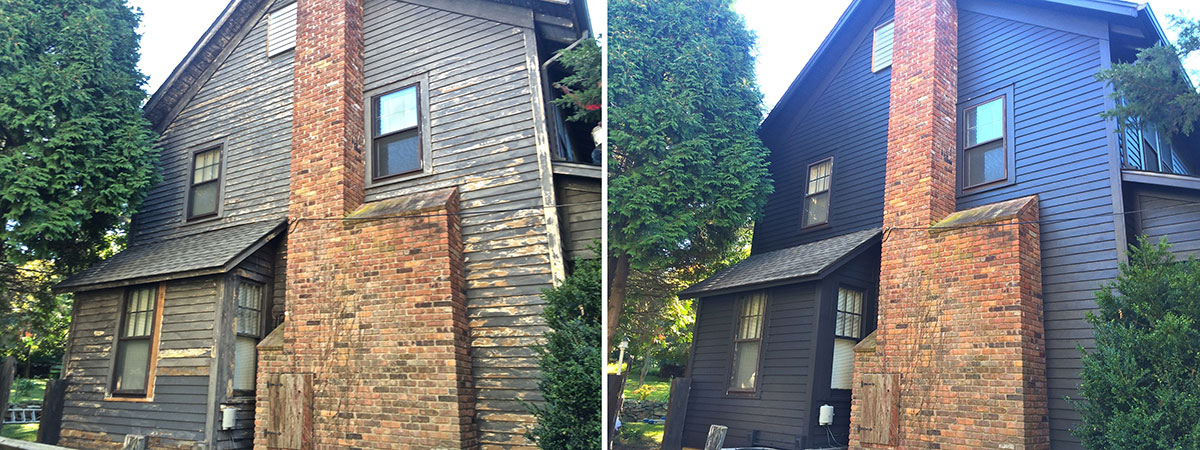
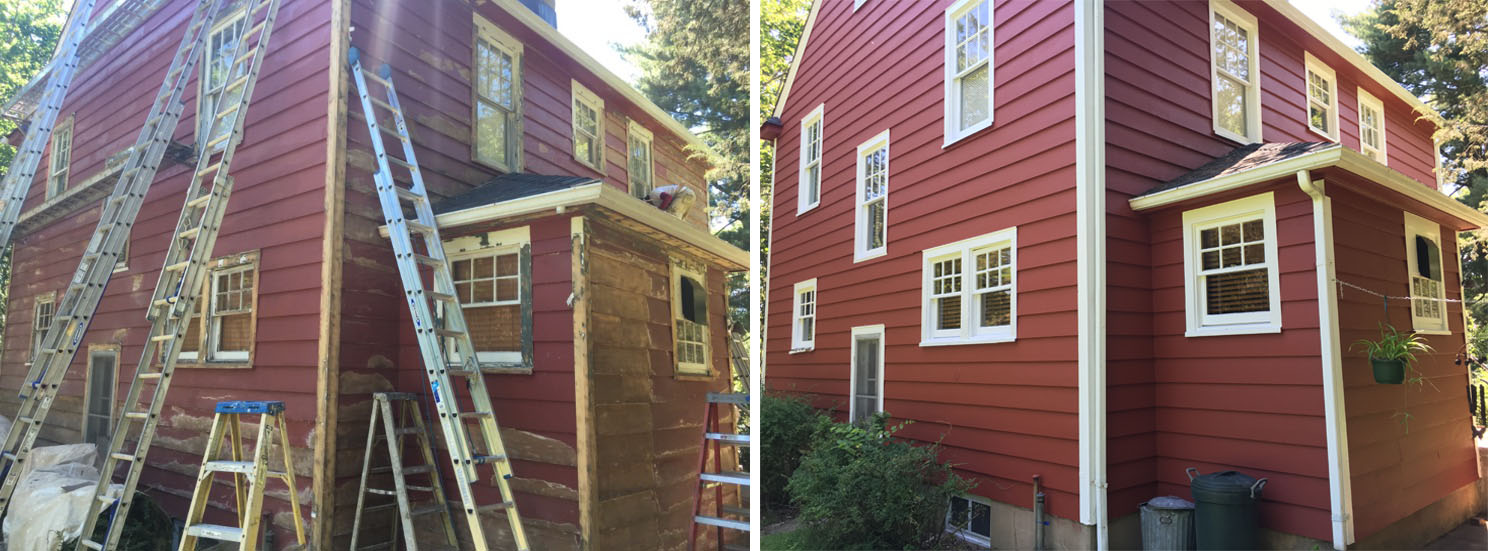
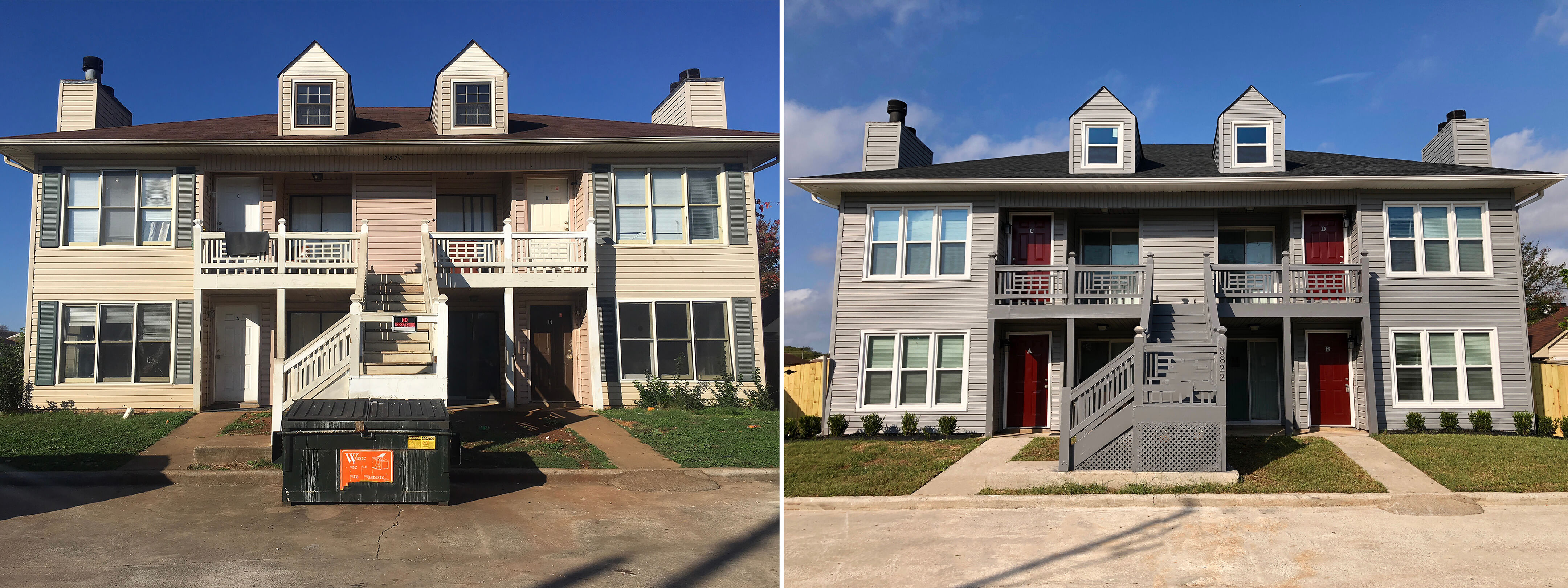
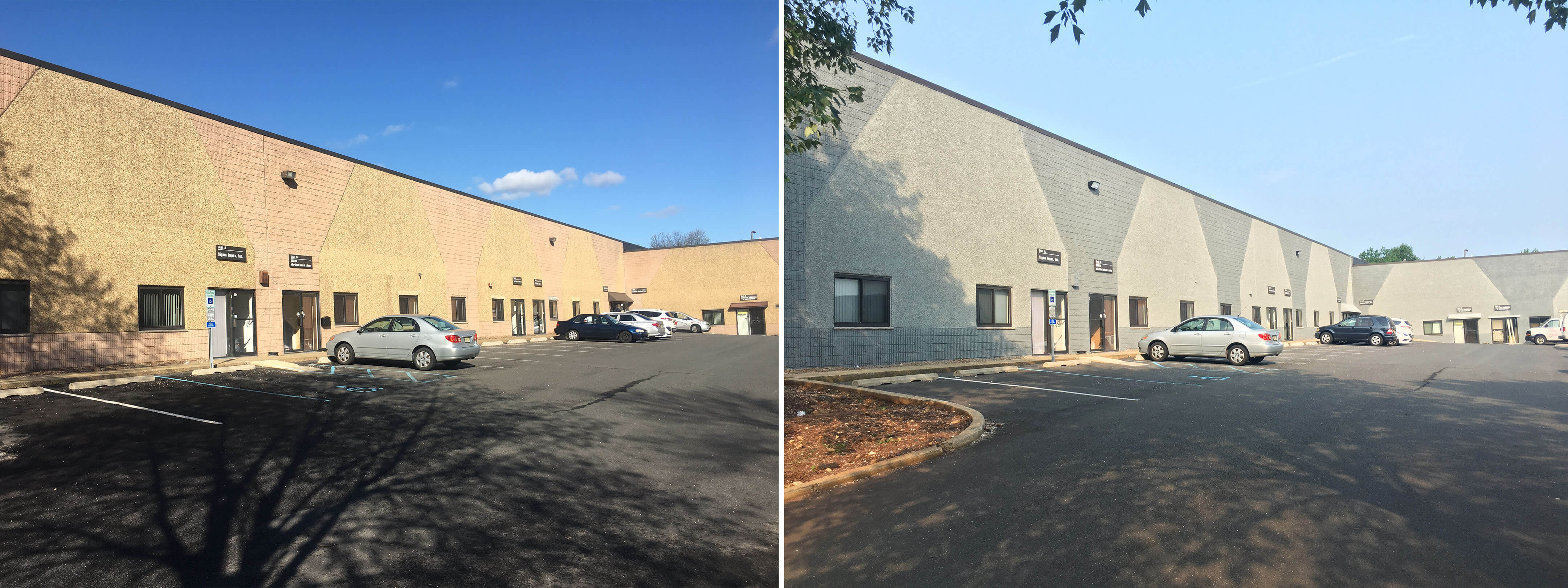
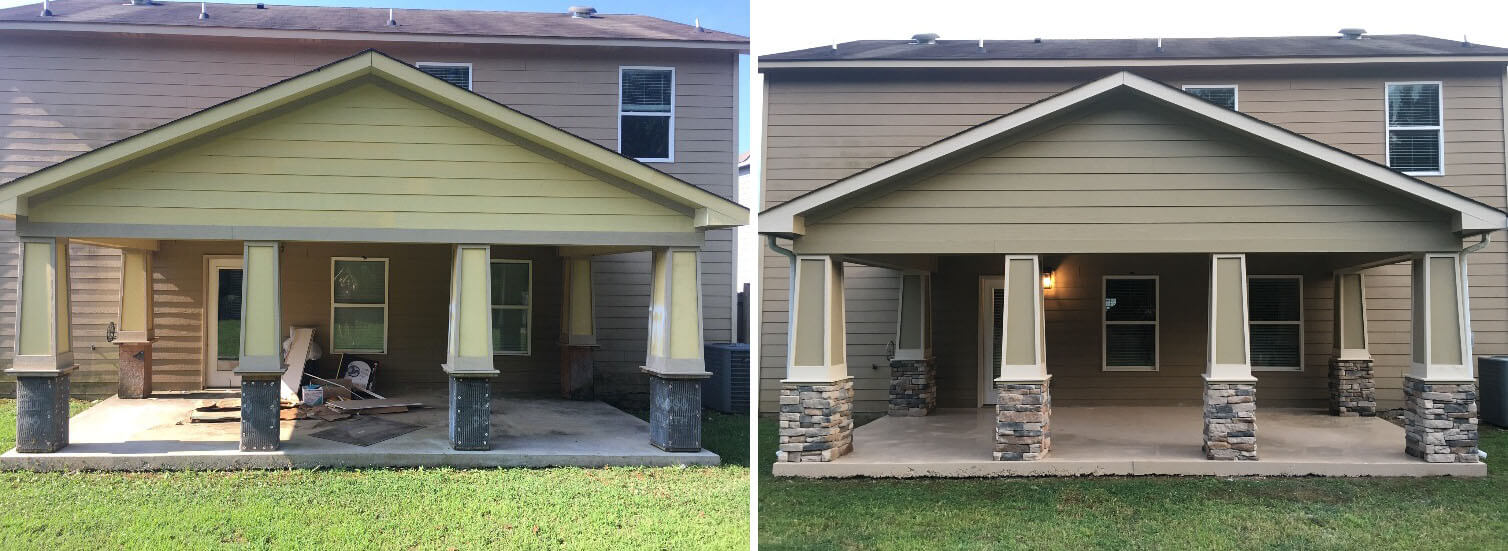
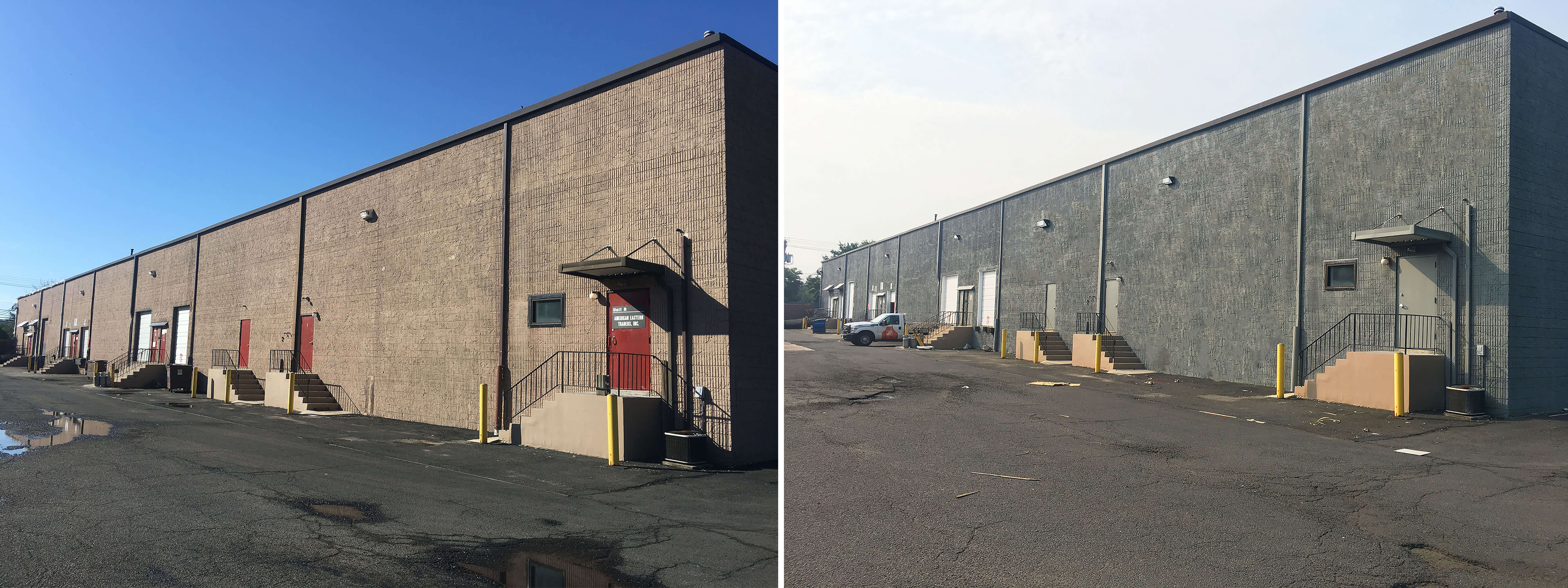
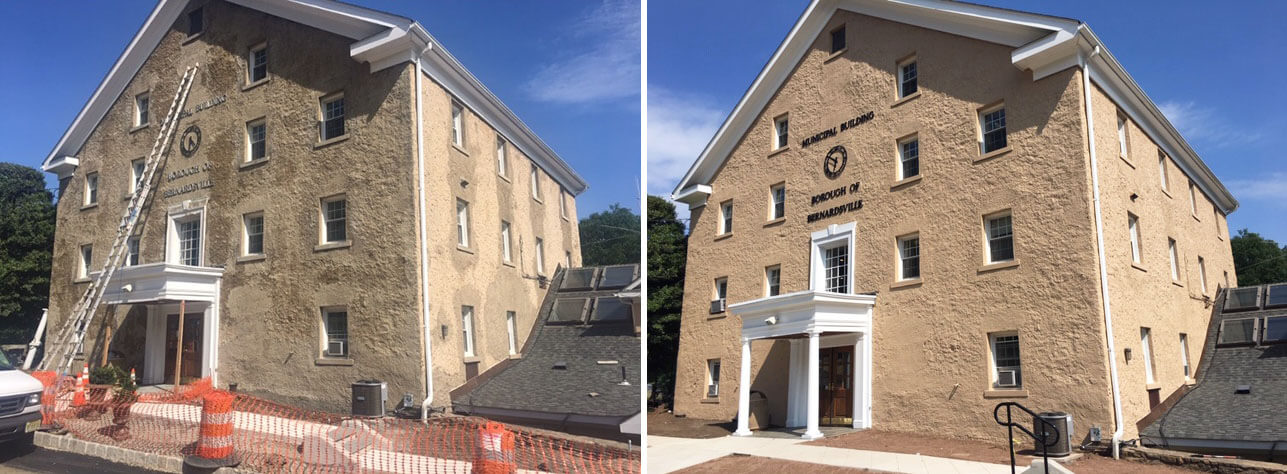
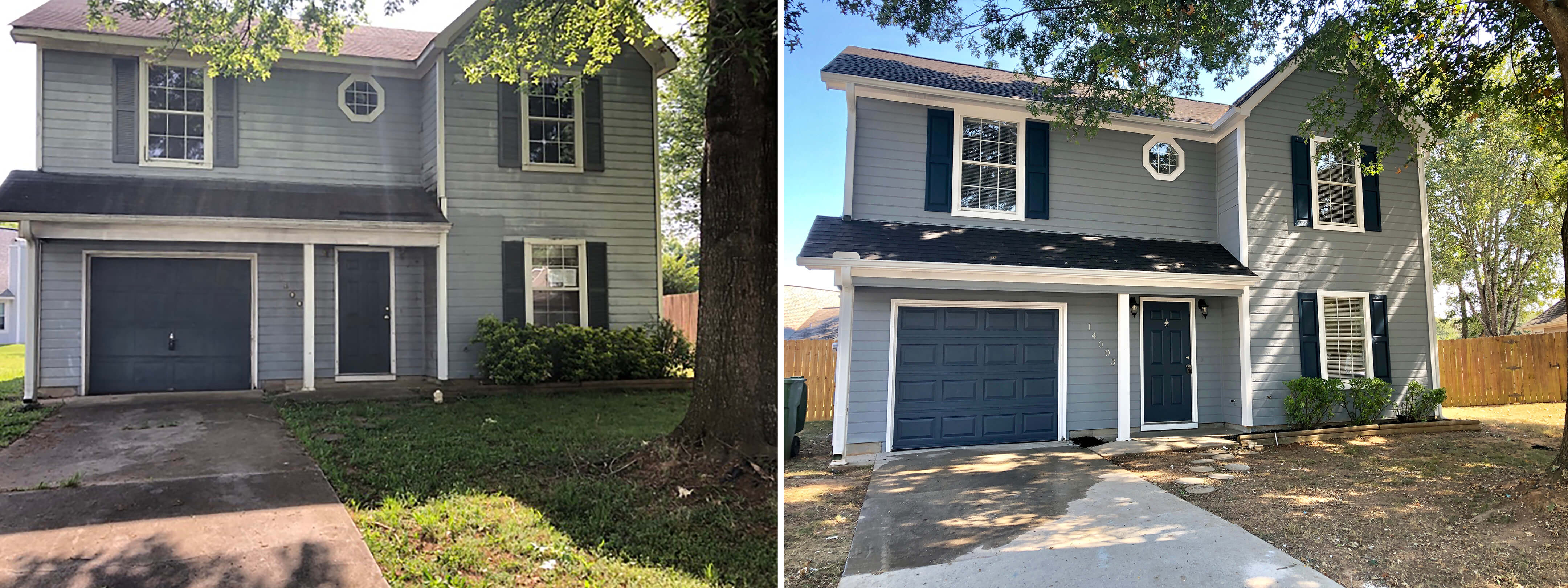
You Might Also Like
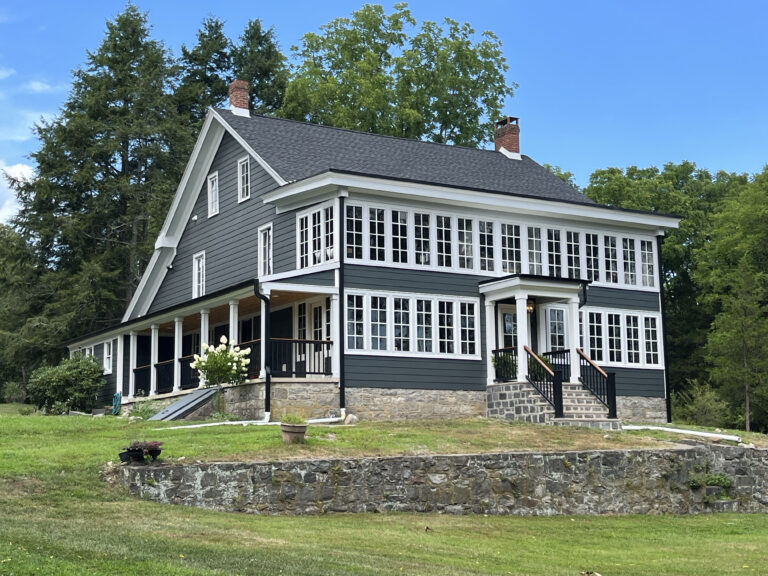 Exterior Paint Durability: How Long Should Exterior Paint Last? - The longevity of exterior paint is a crucial consideration for homeowners looking to maintain the aesthetic appeal and structural integrity of their properties. Various factors influence the durability of exterior paint, including the quality of the paint used, the climate and environmental conditions, the type of surface painted, and the quality of the previous paint … Continue reading Exterior Paint Durability: How Long Should Exterior Paint Last?
Exterior Paint Durability: How Long Should Exterior Paint Last? - The longevity of exterior paint is a crucial consideration for homeowners looking to maintain the aesthetic appeal and structural integrity of their properties. Various factors influence the durability of exterior paint, including the quality of the paint used, the climate and environmental conditions, the type of surface painted, and the quality of the previous paint … Continue reading Exterior Paint Durability: How Long Should Exterior Paint Last?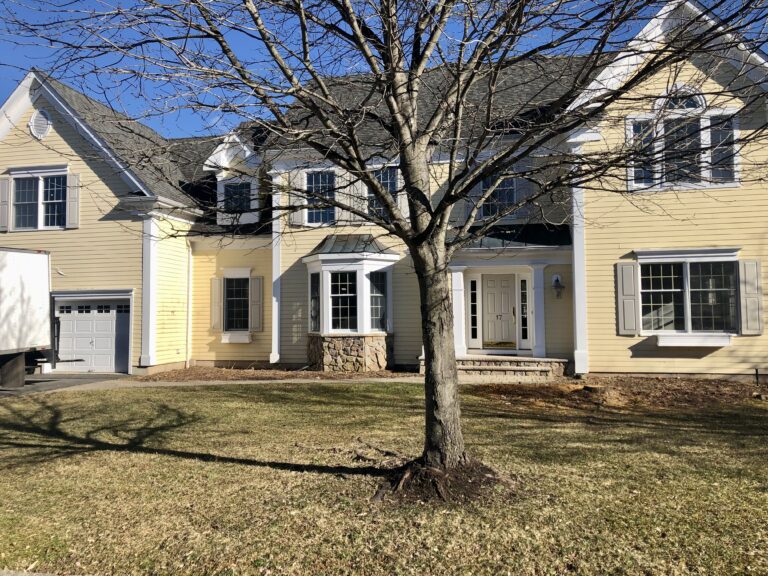 Should I Paint My House Before Selling—Pros and Cons - When people sell their homes, they want to get the best price possible. Maintaining the property is an excellent way to do this. But, home repairs can be expensive, and investing in a property can be risky. Painting is a perfect way to spruce up your house and give it a more modern feel, but … Continue reading Should I Paint My House Before Selling—Pros and Cons
Should I Paint My House Before Selling—Pros and Cons - When people sell their homes, they want to get the best price possible. Maintaining the property is an excellent way to do this. But, home repairs can be expensive, and investing in a property can be risky. Painting is a perfect way to spruce up your house and give it a more modern feel, but … Continue reading Should I Paint My House Before Selling—Pros and Cons

